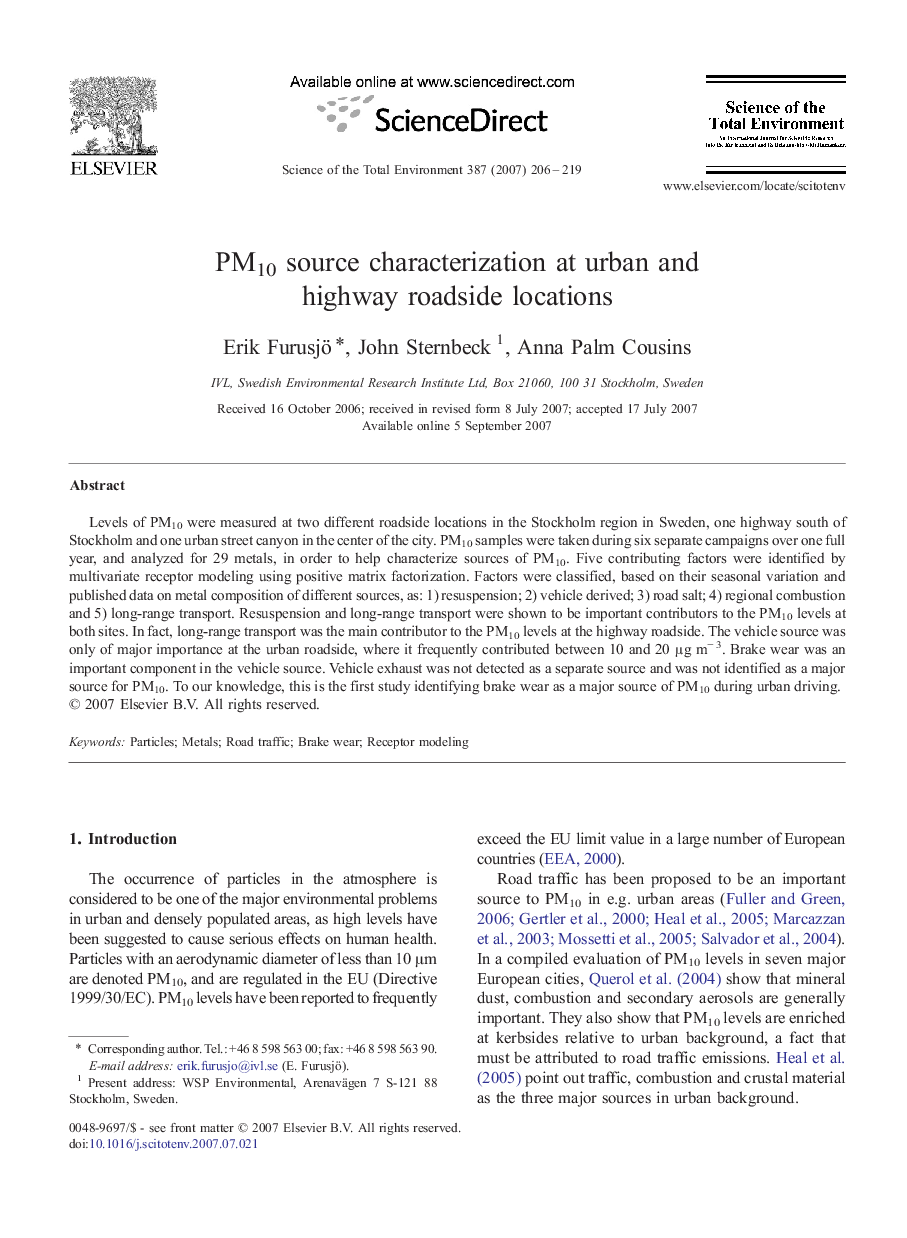| Article ID | Journal | Published Year | Pages | File Type |
|---|---|---|---|---|
| 4432765 | Science of The Total Environment | 2007 | 14 Pages |
Levels of PM10 were measured at two different roadside locations in the Stockholm region in Sweden, one highway south of Stockholm and one urban street canyon in the center of the city. PM10 samples were taken during six separate campaigns over one full year, and analyzed for 29 metals, in order to help characterize sources of PM10. Five contributing factors were identified by multivariate receptor modeling using positive matrix factorization. Factors were classified, based on their seasonal variation and published data on metal composition of different sources, as: 1) resuspension; 2) vehicle derived; 3) road salt; 4) regional combustion and 5) long-range transport. Resuspension and long-range transport were shown to be important contributors to the PM10 levels at both sites. In fact, long-range transport was the main contributor to the PM10 levels at the highway roadside. The vehicle source was only of major importance at the urban roadside, where it frequently contributed between 10 and 20 μg m− 3. Brake wear was an important component in the vehicle source. Vehicle exhaust was not detected as a separate source and was not identified as a major source for PM10. To our knowledge, this is the first study identifying brake wear as a major source of PM10 during urban driving.
